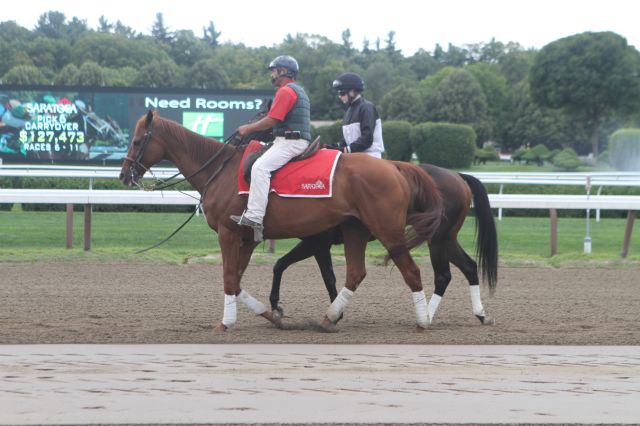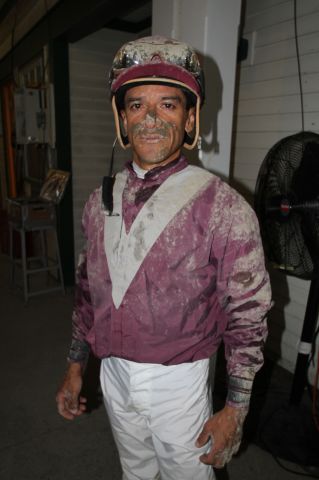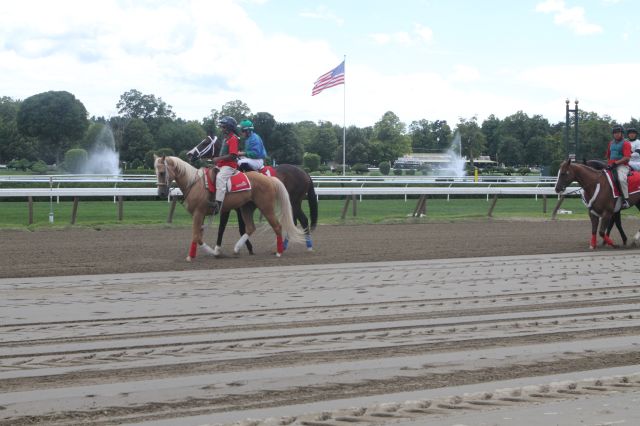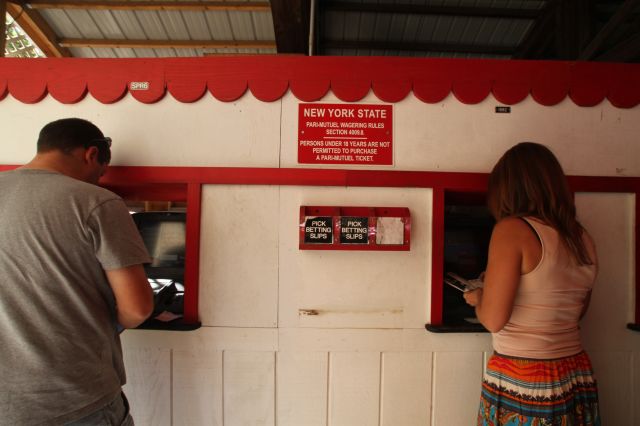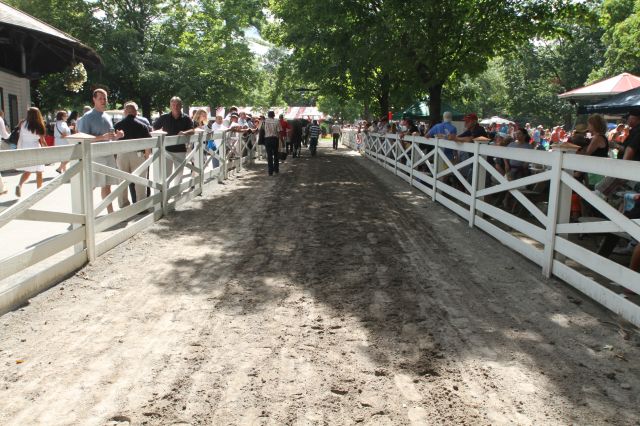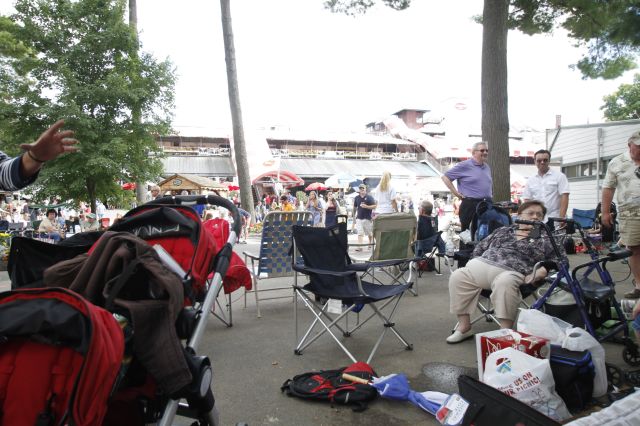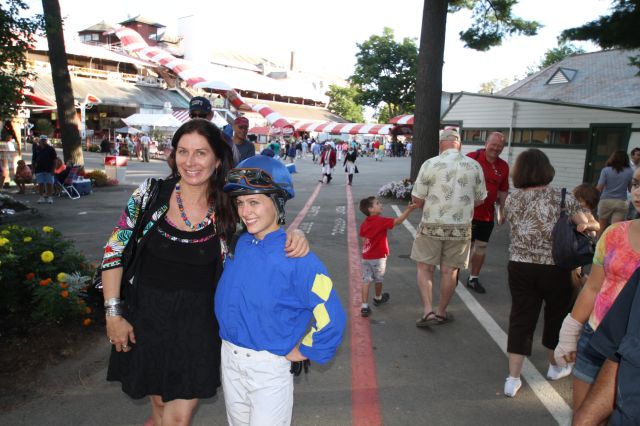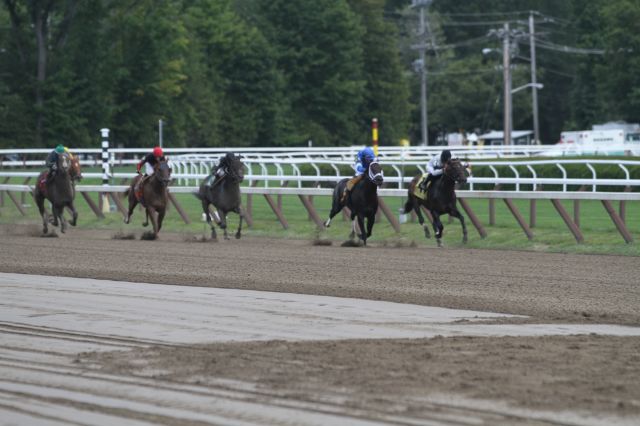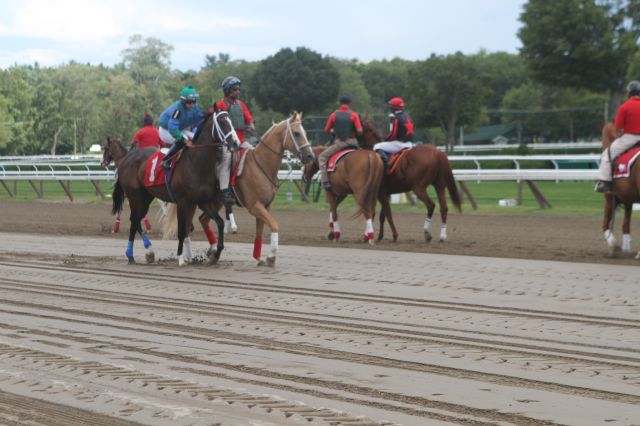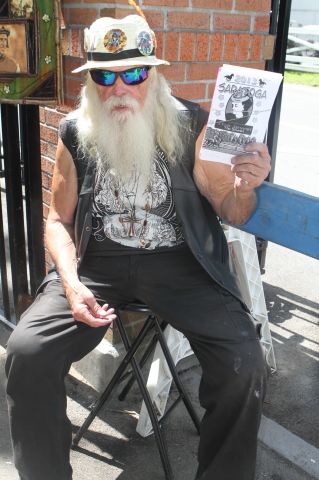I know Saratoga Race Track well, having spent many a summer outing there with my grandparents and my aunt and uncle. Uncle Mel, in his 1970s orange plaid suits and his outlandish bow tie and Aunt Betty in her printed dresses and flowered hats would pick me up and off we’d go to bet on horses, eat hamburgers and watch other fashionistas strut their stuff.
It is the only race track in the country at which the horses walk right through the crowd, on a white-fenced path, to get to the paddock for their races. It really is such a thrill, to get to stand so close to actual greatness-to see the sun glimmering off the horses’ beautifully-maintained coats. To experience their eyes, their musculature-that close, and personal. The Big Red Spring in the backyard (picnic area) has delighted patrons of the track since the 1800’s, which is where I set up shop with a group of people I went to school with many years ago. Below, I watched a winner stroll in after a race.
More riders get ready for another race. There are several throughout the day.
Yup, it’s not as easy as you think it is and the jockey’s get pretty muddied up from a ride around the track.
People watch and prepare for another race to begin.
People placing bets at the window.
Between the fences are where they bring the races to and from the track.
The picnic area, not far from where we set up our own picnic around three large tables.
Man, do I feel tall next to her.
At the entrance.
The track has always been about fashion and today is no different except the majority of people who attend on a hot summer weekend afternoon tend to be in shorts and casual shirts. There are the few who still take it seriously however and hats and hair pieces are what stand out.
They even sell them on-site should you get in the mood to up your wardrobe in real time.
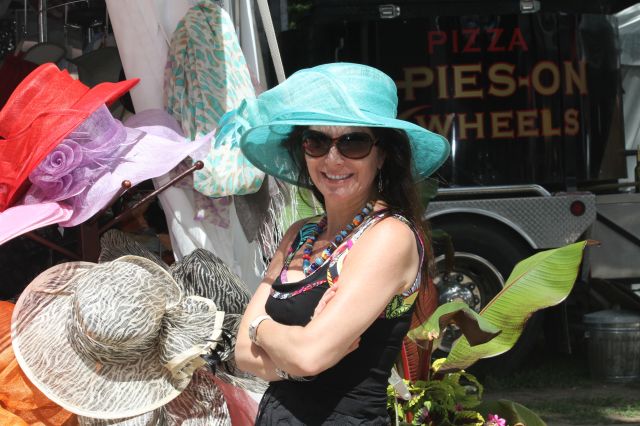
The history of Saratoga goes back to the 14th Century, and the Aboriginal Americans who lived and visited here. Much of the appeal of this special place had to do with the healing waters-many different natural waters, some effervescent, which were credited with curing myriad ailments. On August 3, 1863, two men of great wealth and horse owners, decided to create a race track that would be worthy of their Thoroughbreds. John Hunter and William R. Travers created a track on the north side of Union Avenue in Saratoga Springs, which now is the site of the Oklahoma Training Track.The village-then town-grew and evolved into the City of Saratoga Springs-and always the waters were the center of attraction. By the mid-1800s, the city was the summer home of many wealthy Americans and internationals, and a hotbed of both tourism and gambling. The American War Between the States (the Civil War) was little distraction to those who sought refuge from the heat of cities like New York and Boston-the city rocked on, and prospered. In fact, one month to the day after the heartbreaking Battle of Gettysburg, the Saratoga Race Course was born, officially.
No doubt the two horsemen had great vision, for they willed into being the Saratoga Race Course-not only the oldest racetrack in the United States, but the oldest sporting venue of any kind in this country, as well. (In 1864 the Saratoga Racing Association named a stakes race for Travers-and that race became the oldest major Thoroughbred race in America. The Travers now is called the Midsummer Derby: the greatest three-year-old horses trek to the Spa City to compete for the $1 million purse.)
In 1864, the track moved across Union Avenue, to its present location. The original meet in 1863 was four days long. (The length of the meet has grown with time, to the current 40 days/six-week season.) The world’s most accomplished Thoroughbreds have raced on the hallowed ground of Saratoga Race Course, for indeed, Saratoga is the gold standard. Only the best in their respective divisions dare to come and test their talent at the Spa. Names such as Secretariat, Seattle Slew, Affirmed, Rachel Alexandra, Curlin and the mighty Man O’War-all spent time in residence in the primeval backstretch, and racing on the track.
In fact, it was the Sanford Stakes in 1913 that added the word, “upset” to the English lexicon, meaning an unexpected defeat of an opponent that’s considered to be more formidable. Man O’War went into the race with 21 wins-and lost to a horse named Upset. Ironically, Upset’s name now is invoked every time there’s a surprise victory-whether that’s in horse racing or another sport-even business and politics. When another Triple Crown victor, Gallant Fox, was defeated by a horse with 100-1 odds, Saratoga gained the ominous nickname “The Graveyard of Champions.”
Filmmakers and other media have sought out Saratoga and the race course as both the main focus or as a set. Filming in Saratoga, and at Saratoga Race Course, assures original beauty that no set designer could reproduce. (i.e., films such as “Seabiscuit,” “Saratoga,” “The Horse Whisperer,” “The Way We Were,” “Billy Bathgate,” “Ghost Story” and “My Old Man,” to name a few.) A scene in Ian Fleming’s James Bond novel, “Diamonds are Forever,” features a scene at the Saratoga Race Course. Authors, as well, long have been enamored with the haunting, untouchable beauty of the place: Dick Francis, Bernie Orenstein, Edna Ferber and Stephen Dobyns are among a few of the literati who’ve mentioned the place or outright set their books at the track and town.
Photos by Renee Blodgett. For other posts on New York State, visit our New York page / what do to in New York State / The Adirondacks.

Renee Blodgett is the founder of We Blog the World. The site combines the magic of an online culture and travel magazine with a global blog network and has contributors from every continent in the world. Having lived in 10 countries and explored over 90, she is an avid traveler, and a lover, observer and participant in cultural diversity. She is also the founder of the Magdalene Collection, a jewelry line dedicated to women’s unsung voices and stories, and the award-winning author of the bestselling book Magdalene’s Journey
She is founder of Blue Soul Media and co-founder of Blue Soul Earth as well as the producer and host of the award-winning Blue Soul CHATS podcast, that bridges science, technology and spirituality. Renee also founded Magic Sauce Media, a new media services consultancy focused on viral marketing, social media, branding, events and PR. For over 20 years, she has helped companies from 12 countries get traction in the market. Known for her global and organic approach to product and corporate launches, Renee practices what she pitches and as an active user of social media, she helps clients navigate digital waters from around the world. Renee has been blogging for over 16 years and regularly writes on her personal blog Down the Avenue, Huffington Post, BlogHer, We Blog the World and other sites. She was ranked #12 Social Media Influencer by Forbes Magazine and is listed as a new media influencer and game changer on various sites and books on the new media revolution. In 2013, she was listed as the 6th most influential woman in social media by Forbes Magazine on a Top 20 List.
Her passion for art, storytelling and photography led to the launch of Magic Sauce Photography, which is a visual extension of her writing, the result of which has led to producing six photo books: Galapagos Islands, London, South Africa, Rome, Urbanization and Ecuador.
Renee is also the co-founder of Traveling Geeks, an initiative that brings entrepreneurs, thought leaders, bloggers, creators, curators and influencers to other countries to share and learn from peers, governments, corporations, and the general public in order to educate, share, evaluate, and promote innovative technologies.


